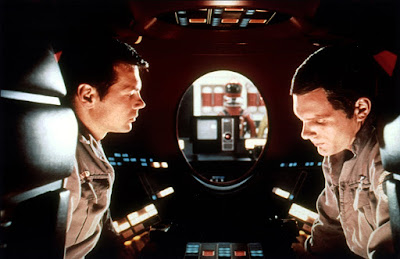We went to a talk by local author, Tom Miller, last Thursday evening. The talk was sponsored by Special Collections of the University Libraries, and was titled: 1968: From the My Lai Massacre to Yellow Submarine, as a new exhibition was begun – 1968 in America.
Miller is primarily a travel writer of both books and collections of essays – recent photo above and Miller circa 1980 below.
His first book – Assassination Please Almanac: Everything Anyone Could Possibly Want to Know About the JFK Assassination – was published in wraps back in 1977 Henry Regnery Co.. The book compiles almost every detail and newspaper article that had come out to that time regarding JFK’s assassination. I enjoyed reading it very much and also learned much. The book was quickly bought up by those interested in the assassination and the many related conspiracy theories. It was re-issued in 2000 – again in wraps as pictured.
His first book of travel essays was published by Harper & Row in 1981 – On the Border: Portraits of America’s Southwestern Frontier. The book compiles essays he wrote based on his experiences along the entire US/Mexico border from Brownsville, Texas, to San Ysidro, California.
His next book (The Panama Hat Trail: A Journey From South America) was published by William Morrow in 1986. I view it as somewhat of a masterpiece, as it follows a Panama Hat from the straw fields of Ecuador (yes, “Panama” is a misnomer) at every step of the way from Ecuador to the US to merchandising to a final customer in San Diego.
A more recent effort (Jack
Ruby’s Kitchen Sink: Offbeat Travels Through America’s Southwest) contains
essays ranging from a Texas auction of many of Ruby’s estate, to a
shooting/target practice near Phoenix that leads to death by Saguaro. That book
was published by National Geographic in 2000. Miller has several more recent
books, but I have yet to read these. Below is Miller's very well-worn briefcase.


























